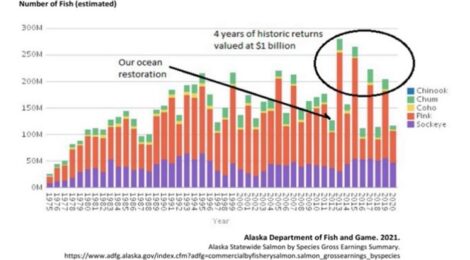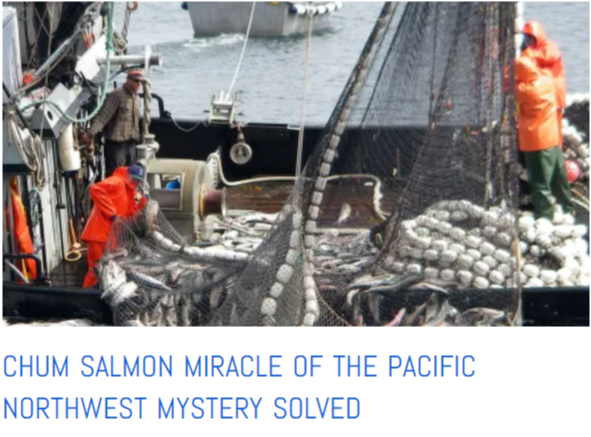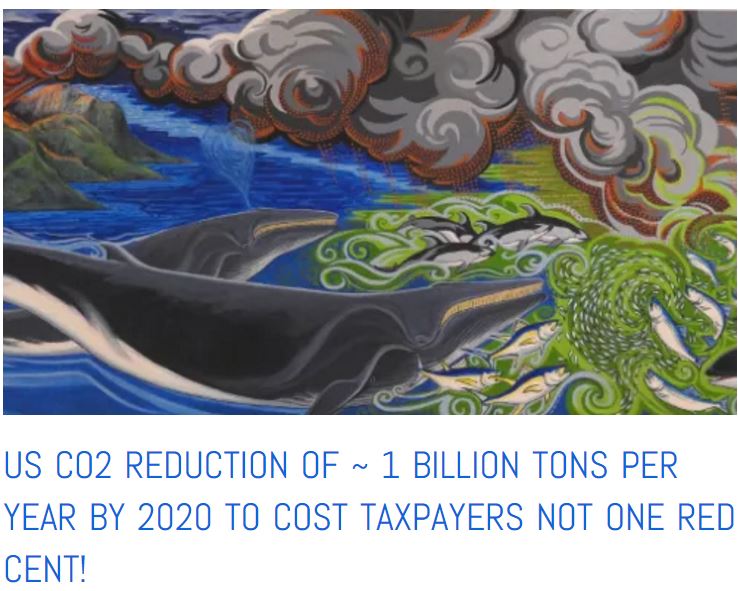
A Picture Tells A Thousand Words, Bring Back The Fish
Sometimes a single picture is all that is needed to confirm a scientific fact.
In searching for the root of the Alaska Salmon miracle of 2013 this picture says much of what is needed to say.
One extraordinary timely event took place in the Gulf of Alaska preceding the fish coming back at historic high numbers
It was our ‘dust cheap’ efforts to restore North Pacific Salmon pastures.
Looking at this chart published in early 2020 by the Alaska Department of Fish and Game with my circles and arrows added to help tell the story. Pink salmon have the shortest, 2 year, life-cycle of the five species of Pacific Salmon native to the Eastern Pacific. They hatch in rivers in the winter and when the spring thaw and floods arrive the baby Pink salmon, smolts, are swept out to sea. There they have less than two years to grow to maturity before their spawning instinct will see them return to the very rivers and streams where they were hatched. Pink salmon display their two-year cycle with a large return during odd-numbered years and a small return during even-numbered years.
In this wonderful graphic of the Alaska salmon caught over the past 50 years, one sees immediately that something wonderful happened to benefit the Pink Salmon. In perfect timing to our work to restore their salmon pasture during the summer of 2012, it is apparent that our hypothesis is proven. The expected catch of Pink Salmon in 2013 was provided by countless salmon experts and managers to be 50 million fish. But the catch turned out to 224 million Pinks, that’s 4.5 times the official prediction! The largest catch in all of history.
There’s more in this picture than just the catch from 2013. In the next ‘odd-numbered’ year, 2015, the second-largest catch in all of history was made. Then again in 2017, a remarkably large catch followed, and again in 2019 a catch not to be shrugged at.
There is more in the picture when one looks at other species and matches the historic catch with the natural history of the species.

Chum salmon, aka Keta or Dog salmon, are a vital species in the North Pacific, they are speaking to us. Are you listening? This past year, 2016, the return of Chum Salmon to the British Columbia coastal rivers was the largest is history, a salmon miracle. Click to read more.
In neighboring British Columbia, the number of Pinks returning in 2013 was also the largest in history. Then at precisely the right time for the southern Chum salmon of British Columbia, a long life cycle salmon, swam home to their rivers in vast numbers, and the ‘catch’ that proved to be the largest Chum Salmon catch in all of history.
There is much more in this incredible image, far more than 1000 words, but I am trying to keep this post short. You’ll have to return for the story of the many additional benefits of our returning the Gulf of Alaska ocean pastures to historic health and productivity. Or, just search this blog for plenty of examples. Maybe you love Orca whales in which case you might read the story of the Orca Whale Baby Boom Miracle.

Following the eruption of Kasatochi its mineral rich dust had a profound effect and ocean pastures turned from clearest blue to murky green. A rich abundance of ocean plant life, phytoplankton, flourished and bloomed right in the best place, the nursery and rearing pastures of Pacific salmon
This work was inspired in part by 30+ years of scientific study and a volcano in the Aleutian Islands of Alaska that erupted in 2008, along with two previous volcanic eruptions in earlier decades. Each eruption spewed dust onto Gulf of Alaska salmon pastures at just the right time and place and resulted in the largest numbers of salmon in history.
As an aside, how did the old adage One Picture Is Worth A Thousand Years come about.
Many things had been thought to be ‘worth ten thousand words’ well before pictures got in on the act; for example:
“One timely deed is worth ten thousand words” – The Works of Mr. James Thomson, 1802.
“That tear, good girl, is worth, ten thousand words” – The Trust: A Comedy, in Five Acts, 1808.
Later Henrik Johan Ibsen, a Norwegian playwright and theatre director and often referred to as “the father of realism” is sometimes credited with the phrase, “A thousand words leave not the same deep impression as does a single deed.”
Bring Back The Fish.









A gift from Mother Nature given upon practical hands produced a miracle…..thus the Dust.